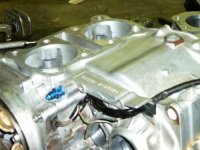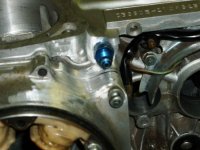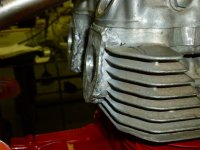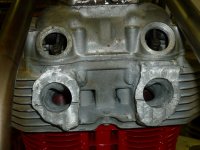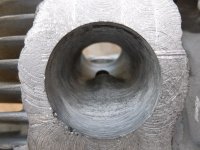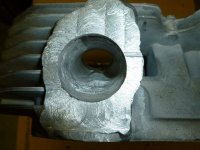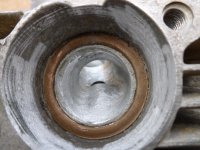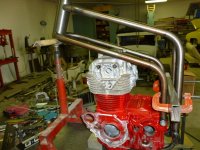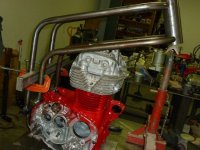I agree that where empirical data exists, it should always but used. However, the use of flow benches and dynos for every engine modification can break that bank and so it's necessary to look at many problems and approach them with the knowledge gained from other applications.
For instance, it doesn't seem to be an unreasonable stretch of the imagination to make the assumption that today's head design is an improvement over the technology that was available 40 years ago. With that supposition in mind, we can make comparisons between today's technology and that of yesteryear.
We now notice that port ceilings tend to be higher. Valve placements are a bit off center (to promote swirl). And also, exhaust ports tend to be larger (especially in hemi and tubbed heads).
Stock valve sizes for the CB360 are 34mm and 28mm for intake and exhaust, respectively. This gives us a sizing ratio of 82.3%.
Now looking at some more modern engines we can see the following:
Yamaha FJ1100 - 84%
BMW M5 - 86.3%
Cosworth F1 - 87.5%
Ducati 748R - 83.1%
Honda NS50 - 87.5%
Honda VF1100 - 88.1%
After going through a list of two pages of valve sizes, I was only able to find only a few cases of engines that use a smaller ratio than the Honda 350/360 and with the exception of one Harley, all of the others were purpose built race cars (not bikes).
Even with the valve size ratio as it is, you will likely still see gains by reworking the exhaust port. I haven't checked recently, but there may be room to raise the ceilings a little and flatten the floors. The ideal shape would look like a 'D' laid on its flat side. Total exhaust port area should be at least 95% of the area valve, so you're looking for at least 858 square mm. If you do decide to hog out the exhaust ports, don't go crazy. You will want there to be a decent step between the exhaust port and the exhaust pipe as this helps to prevent reversion (especially in the low and mid RPM ranges).


